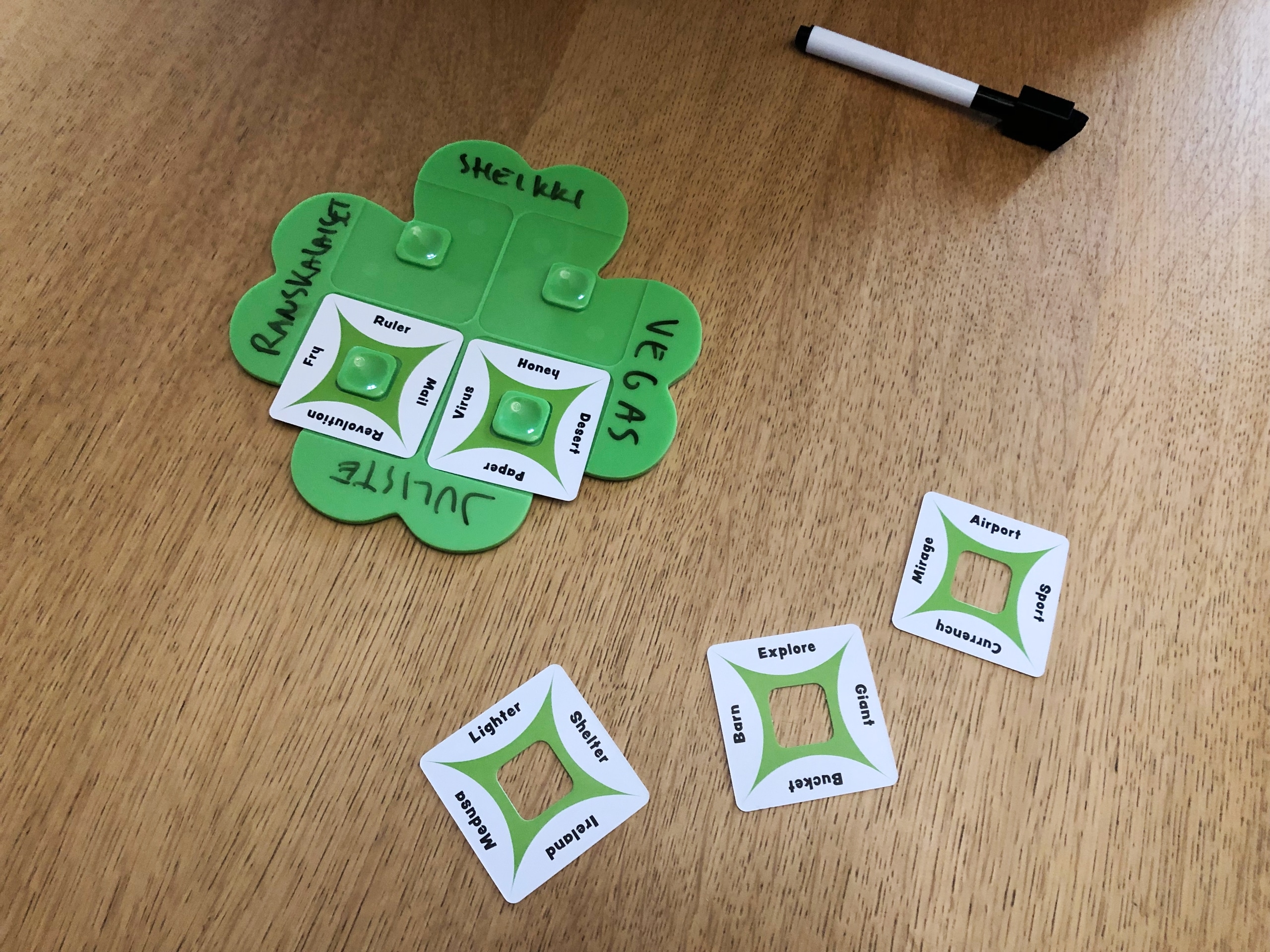Asmodee Nordics sent me a review copy of the game.
So Clover! seemed attractive from the first mention, and I wasn’t disappointed when I played the game. It is a cooperative party game. Everybody gets four cards that form four linked two-word pairs, comes up with clues for those pairs, and the other players then try to guess the correct solution.
The game rules are straightforward; they are practically explained in the back of the box. You can get up and running in minutes. The four cards you get each have four words, one on each side and a hole in the middle. The cards are randomly laid in a 2×2 grid on a clover-shaped board, so you get two-word combinations on the outsides. Then just write a word on the board with a dry-erase pen, something that links the two words together.
After you’re done, remove all the cards from your board. When everybody is done, take turns solving everyone’s board. The cards are turned up – with one extra card to make things more complicated – and the other players must figure out the original configuration based on the clues. If the first attempt is successful, hooray, that’s bonus points! If it’s not, the clue-giver removes the cards that are not correct, and the team gets a second attempt. In the end, the team scores points based on the number of right cards. Once you’ve solved everybody’s board, the game is over. This takes 15–30 minutes, depending on how quick you are.
Despite the easy rules, the game can provide a tough challenge. It all comes down to the words. Sometimes you get an obvious combo (“BODY – SMELL” is probably the most obvious I’ve seen so far), but often it’s pretty hard to come up with something that links the words together in a way other players can understand. You have to consider what the other players know.
I had CATERPILLAR -– SPICE, and after a moment’s consideration, it was obviously “Dune”, but I wasn’t sure if the other players knew enough of Dune. (It turns out they figured out that I meant sandworms with CATERPILLAR but had a harder time with SPICE). You also have to consider the unused words on your cards because the other players will consider them. What seems evident to you may not be as apparent to other players.
The box says the game is for 3–6 players. There’s nothing to stop you from playing with just two players, but I see where the publisher is coming from: the game is more fun if you have at least two people bouncing ideas off of each other in the solving phase. I think four players is something of a practical upper limit for me: with five people solving a puzzle, I think there’s too much noise and not enough play for all five. But occasionally, that may be fun as well, and with six players, it might also be fun to play a 3 vs 3 team game and see which team does better. There’s also an interesting competitive variant on BoardGameGeek.
According to BGG, this is the first game by the designer François Romain. This sure is a good start. Repos Production is, of course, a well-known publisher, and the box size and style makes this sit nicely next to Just One, another good cooperative word game.
